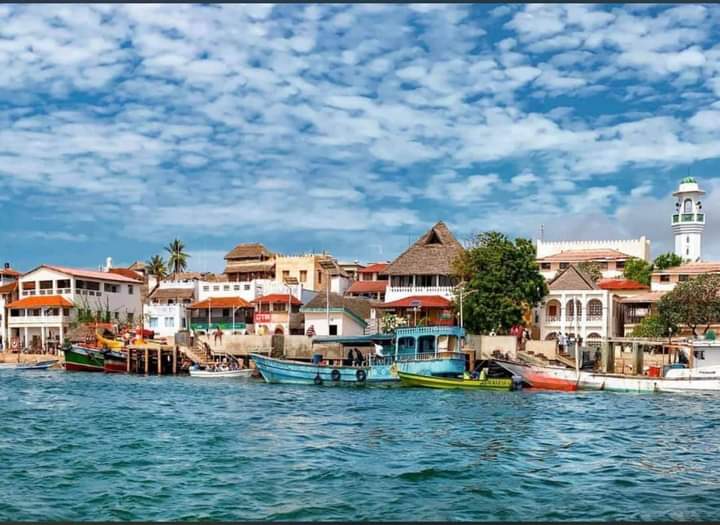
Mwaka Kogwa: Lamu’s Fiery New Year Celebration of Tradition and Unity
Experience Mwaka Kogwa, Lamu’s explosive and captivating New Year celebration. This four-day event offers a rare glimpse into Swahili culture through fiery rituals, symbolic mock battles, and vibrant community festivities that redefine renewal and unity.
Wear Comfortable and Grippy Footwear
Navigating uneven coral stone pathways and sandy areas requires solid footwear to avoid slips and maintain comfort during long event days.
Stay Hydrated Throughout the Event
The coastal heat intensifies with packed crowds and active participation; carry at least 1.5 liters of water and sip regularly to prevent dehydration.
Arrive Early to Secure Viewing Spots
Getting to the ceremony grounds in the morning allows you to find a good vantage point before crowds swell and sunlight becomes intense.
Respect Local Customs and Boundaries
Mwaka Kogwa is deeply traditional and sacred; observe respectfully, ask permission before photographing individuals, and maintain a respectful distance from ritual combats.
Mwaka Kogwa: Lamu’s Fiery New Year Celebration of Tradition and Unity
Each July, Lamu Island shifts gears into a vibrant ceremony known as Mwaka Kogwa, a four-day New Year celebration rooted deeply in Swahili tradition. Imagine stepping into narrow alleys where men clad in vivid, traditional garments face off in ritualistic mock fights, the air thick with the smoke of ignited huts — flames licking upward, daring the night sky to witness this primal renewal. This is not a quiet remembrance; it is a fiercely vivid confrontation with the year past and a cleansing for the year ahead.
Held in Makuti Village, just a few kilometers from Lamu’s historic town center, Mwaka Kogwa blends energy with symbolism. The mock battles aren’t mere spectacles but ritualized contests designed to settle grudges and reset social tensions, forging community unity. The clashing of spears and sticks is punctuated by singing and ululations, human voices weaving with crackling fire and rhythmic drumbeats.
For visitors, this event offers a pulse on Swahili culture, a direct line to history performed openly on the island’s sun-soaked soil. The ceremony’s intimacy demands respect—observe actively but sensitively, as it remains a sacred and serious occasion for locals. Days last long, filled with jubilant dancing, traditional food aromas in the air, and children darting through crowds as elders narrate stories of past years.
Lamu itself shapes this experience. The island’s coral stone streets and palm-lined shores lie just minutes away, creating a contrast between a place frozen in time and the fiery present of Mwaka Kogwa. The tropical sun hangs heavy above, urging hydration and light attire, while the coastal breeze calms the smoke’s sting.
Planning your attendance means arriving prepared. The ceremonial grounds require walking over uneven coral pathways and sandy stretches; sturdy shoes with good grip are essential. Carry water — the tropical heat combined with physical activity in packed crowds demands it. Morning arrival helps secure a prime viewing spot before the gathering thickens under the mid-afternoon sun.
Though primarily a cultural festivity, Mwaka Kogwa’s fiery displays and spontaneous combat summon a deeper engagement with ideas of conflict and reconciliation. They dare you to witness tradition that is fiercely itself: wild, communal, and profoundly human. Whether you’re here for cultural immersion or the raw excitement of ritualized combat, this New Year celebration in Lamu isn’t just observed; it’s lived.
Nearby Trips
All Adventures
Boat Charters
Water Activities
Adventures near Lamu, Kenya
Discover the unique and memorable adventures that make Lamu, Kenya special.
Frequently Asked Questions
What is the significance of the hut burnings during Mwaka Kogwa?
The hut burnings symbolize the cleansing of past wrongs and misfortunes, making way for renewal. Each household builds a small structure set alight to cast away the old year’s troubles.
Are visitors allowed to participate in the mock fights?
Participation is reserved for local men trained in the tradition. Visitors should observe respectfully to appreciate the cultural significance without interfering.
How accessible is Mwaka Kogwa for travelers with limited mobility?
The terrain is uneven with crowded conditions, making mobility challenging. Limited seating is generally available, but visitors with mobility constraints should plan carefully and may require assistance.
Is photography allowed during the ceremonies?
Yes, but always seek permission before photographing individuals, especially during intimate moments. Respect for privacy and customs ensures a positive experience.
What local wildlife might be seen around Lamu during Mwaka Kogwa?
While the ceremony is urban-adjacent, early mornings and evenings may reveal mangrove birds, monitor lizards, and occasional fruit bats along the island’s fringes.
How can visitors support environmental conservation during the festival?
Avoid littering, use reusable containers, and support local initiatives that promote sustainable tourism to preserve Lamu’s fragile coastal and cultural landscapes.
Recommended Gear
Sturdy Walking Shoes
Non-slip shoes suitable for uneven coral and sandy paths keep you stable and comfortable.
Lightweight, Breathable Clothing
Helps manage heat and sun exposure during long days outdoors.
Refillable Water Bottle
Crucial for staying hydrated amid heat and continuous activity.
Sun Protection (Hat and Sunscreen)
The equatorial sun is strong even during the dry season; protect skin and eyes.
Local Insights
Hidden Gems
- "Visit the old Kizingitini ruins nearby for a quiet historical contrast."
- "Explore the Mangrove Forests to witness rare bird species."
Wildlife
- "Mangrove kingfishers"
- "Monitor lizards"
- "Fruit bats"
History
"Mwaka Kogwa traces back generations, blending pre-Islamic and Swahili practices that settled social conflicts through ritual combat, making it a living cultural archive."
